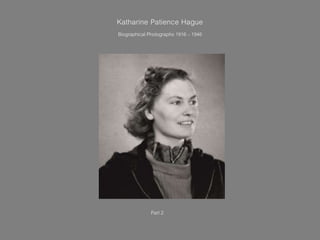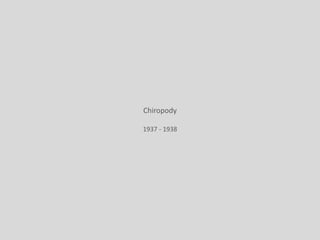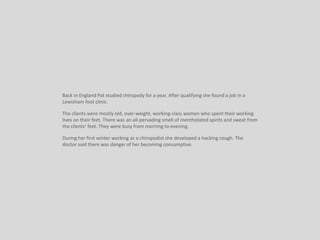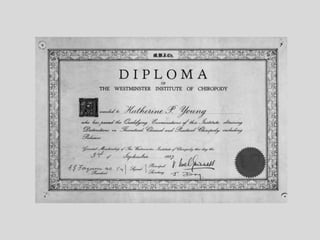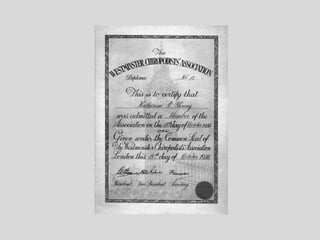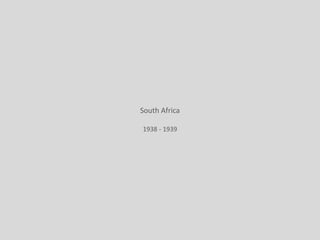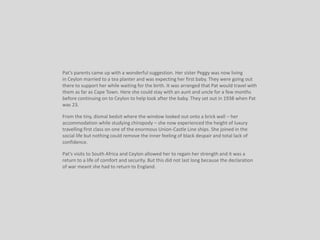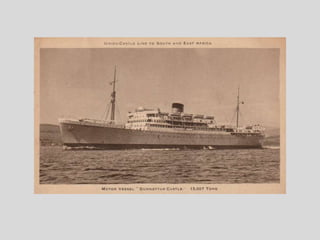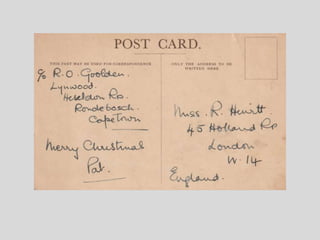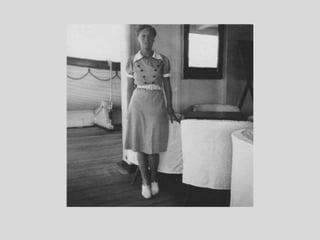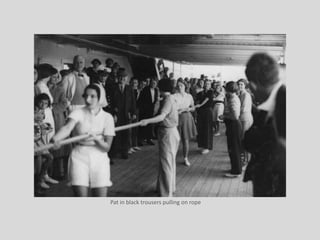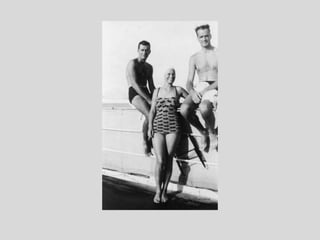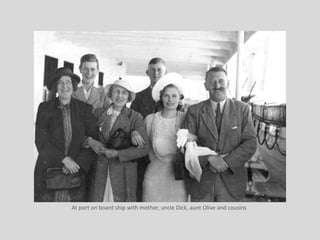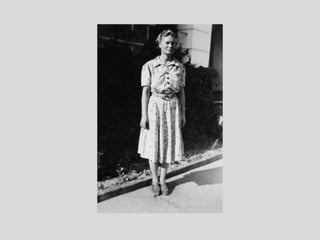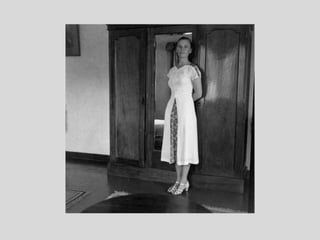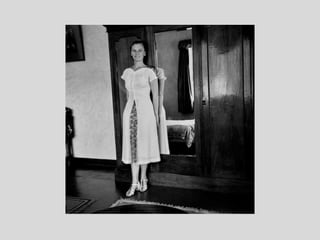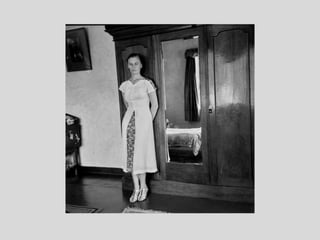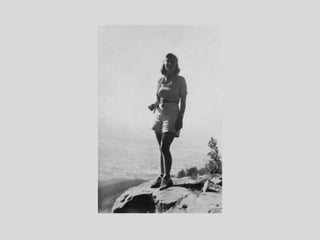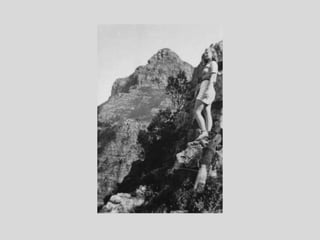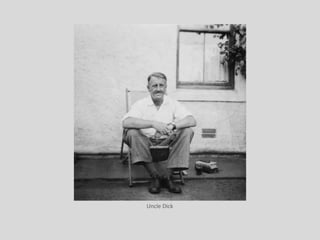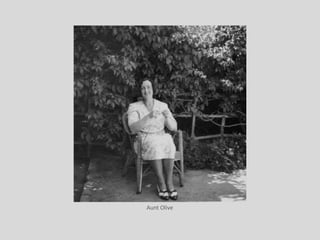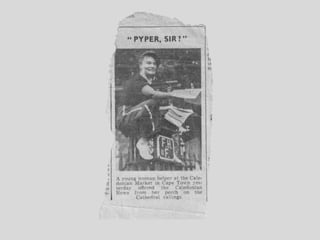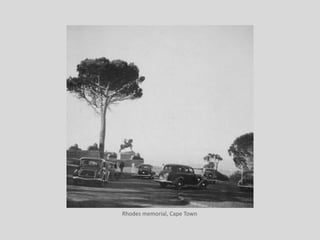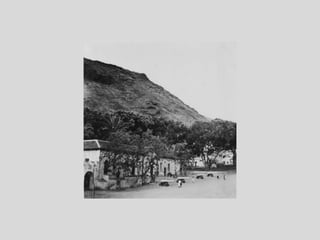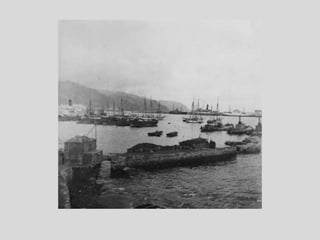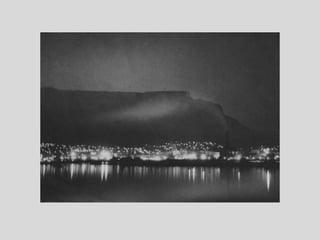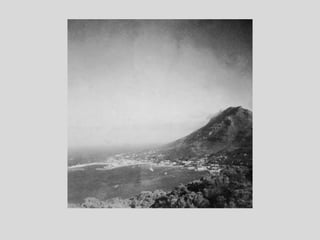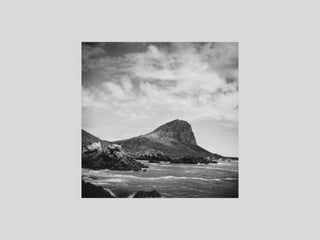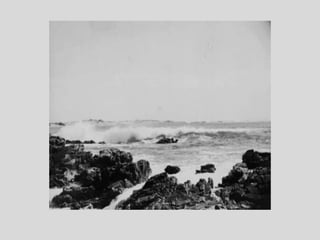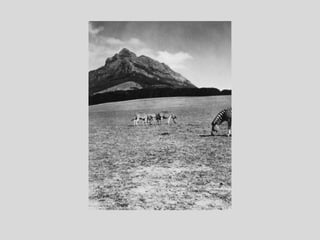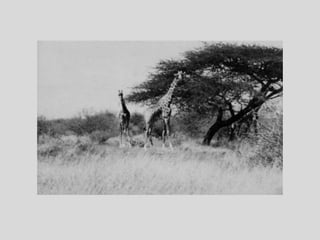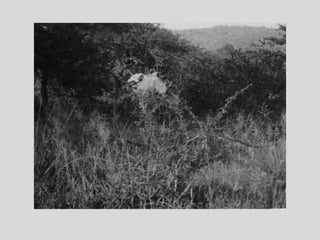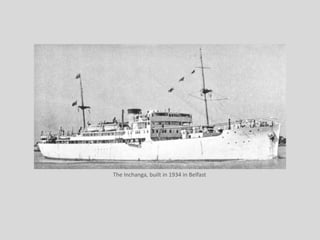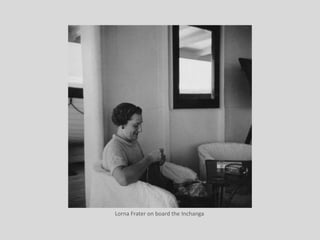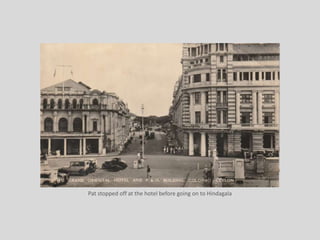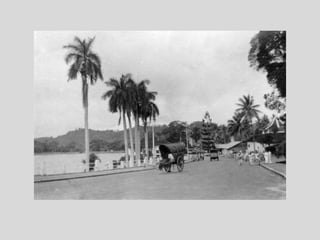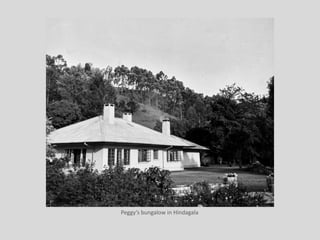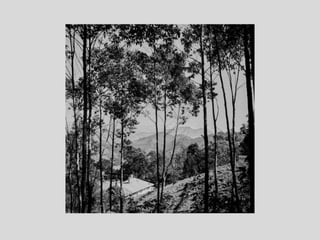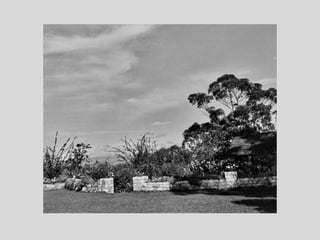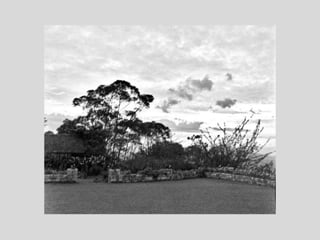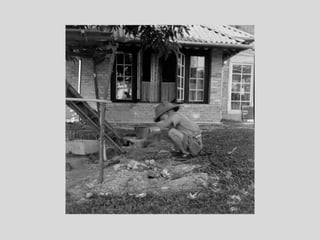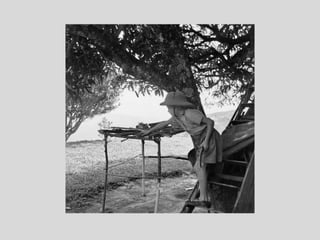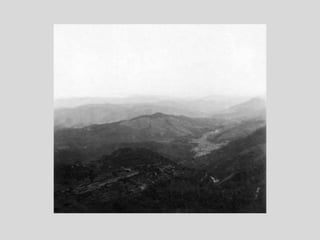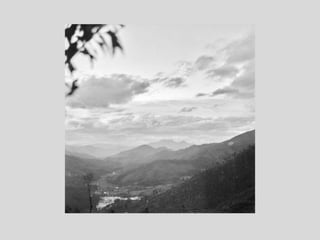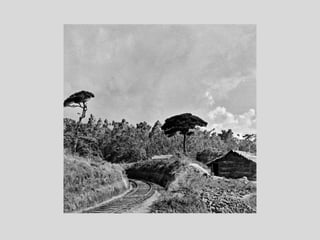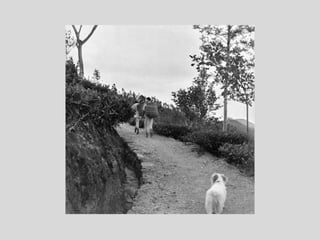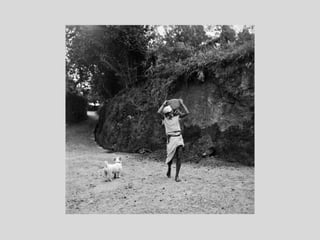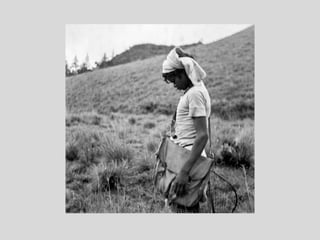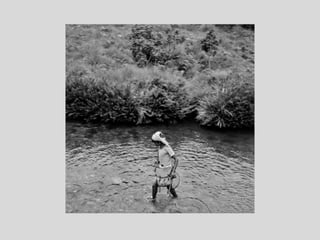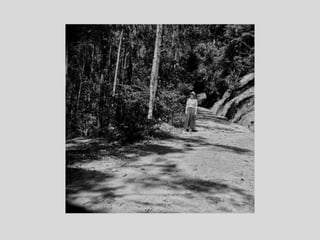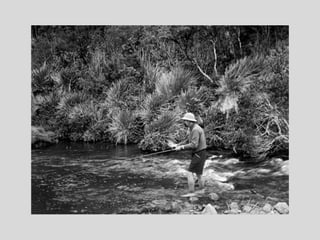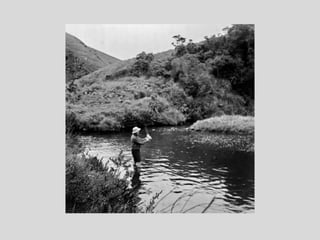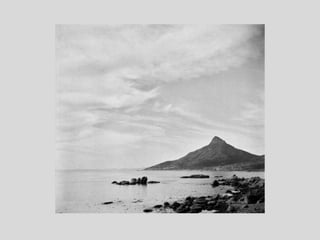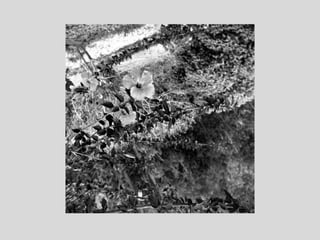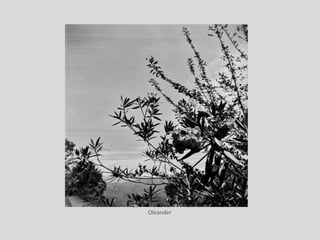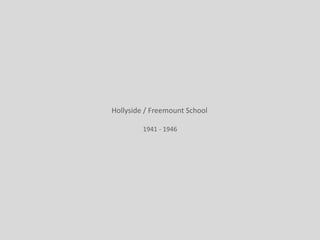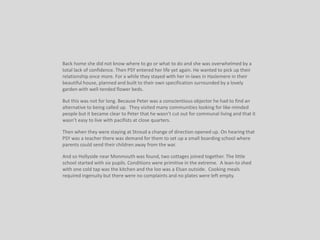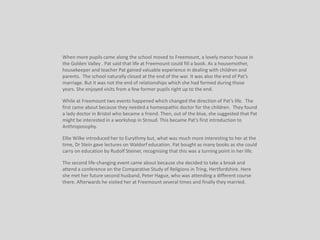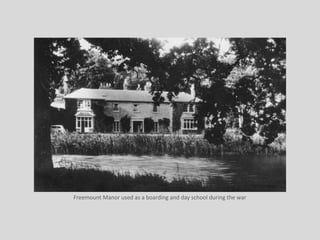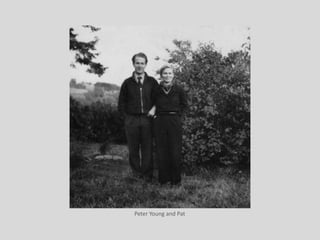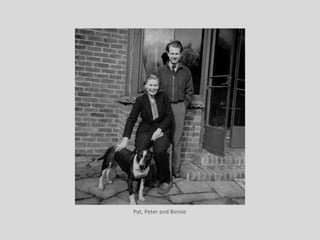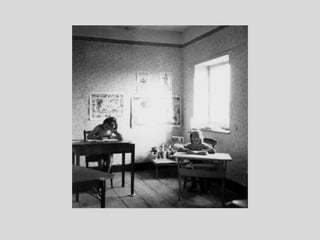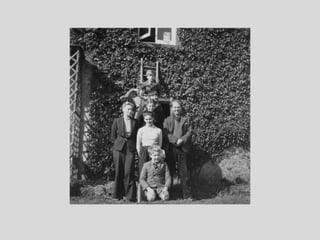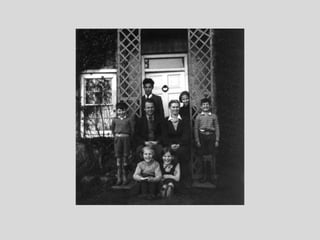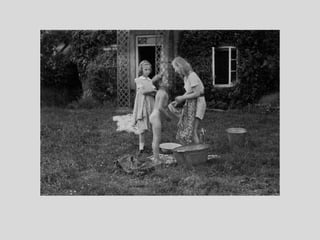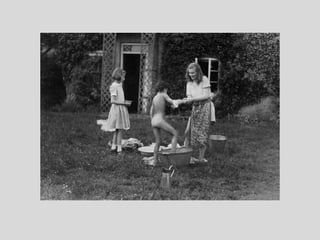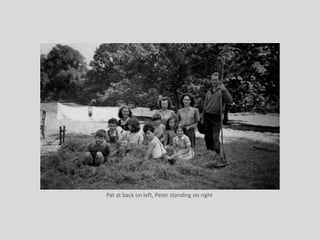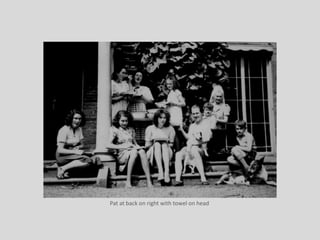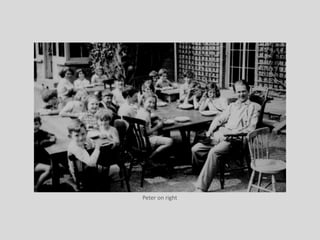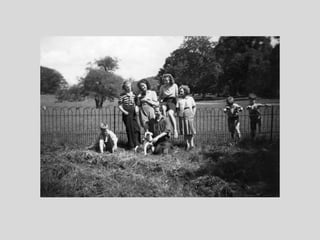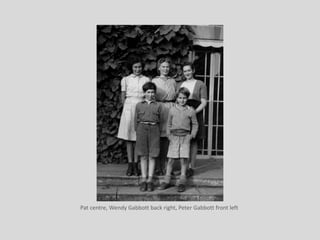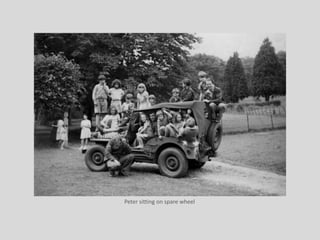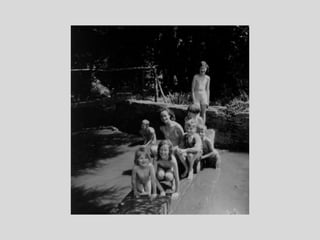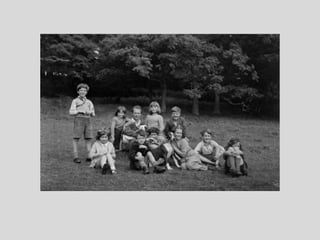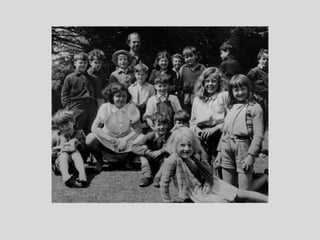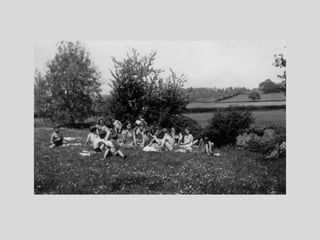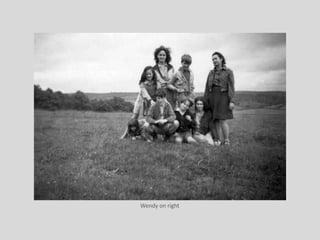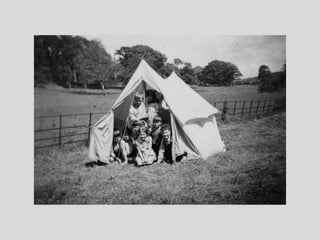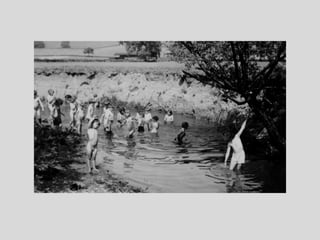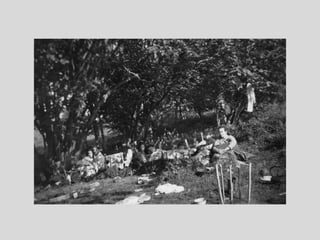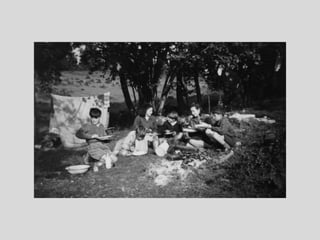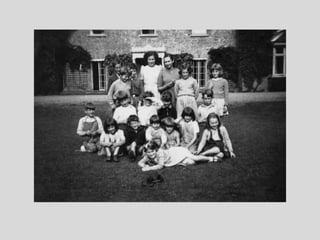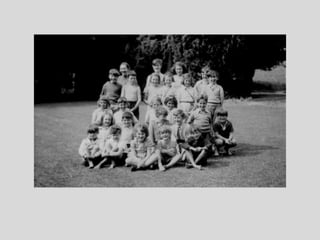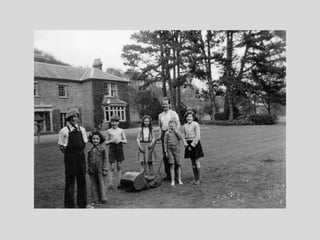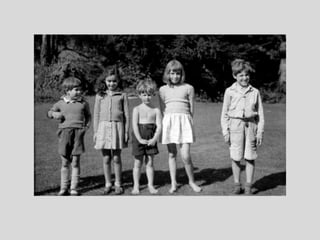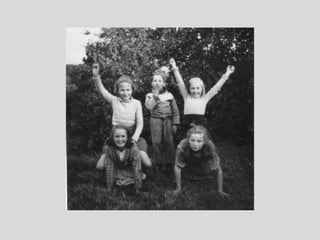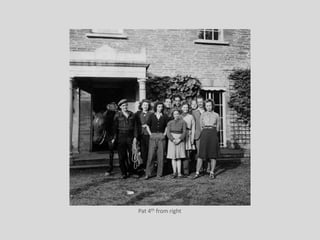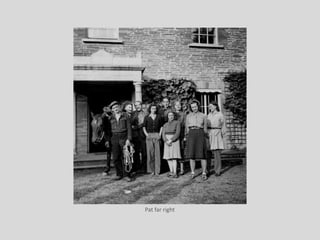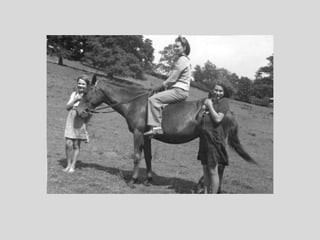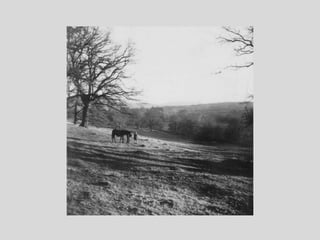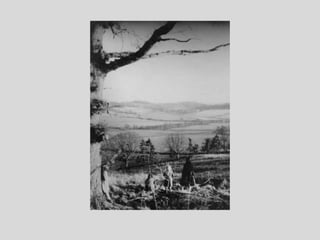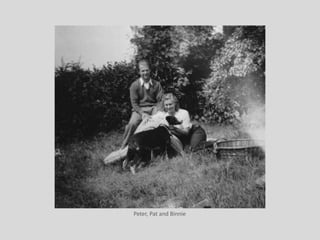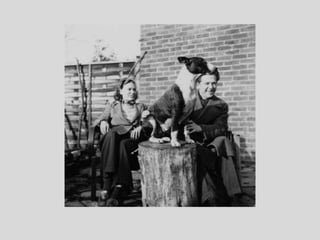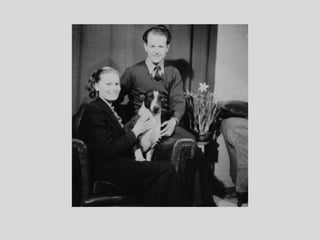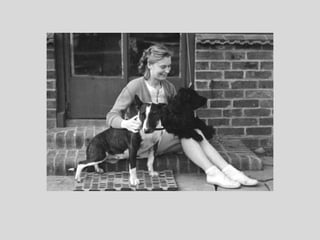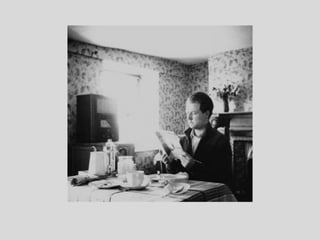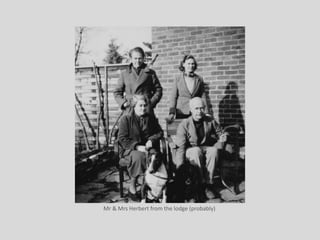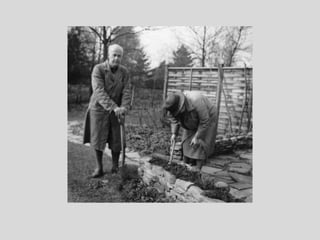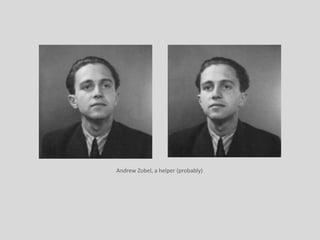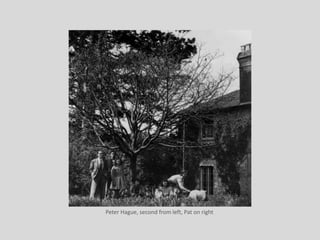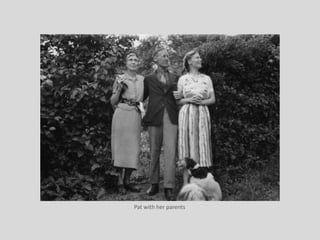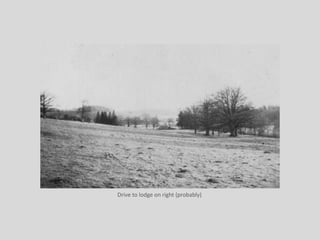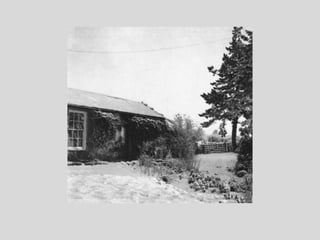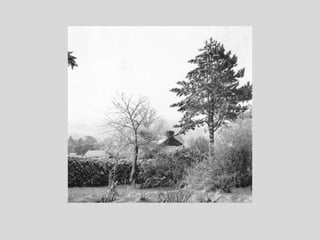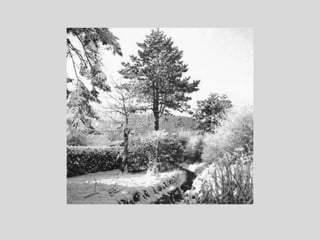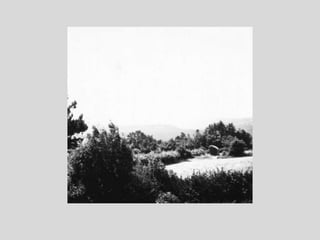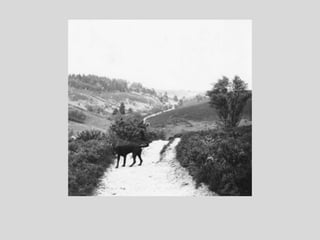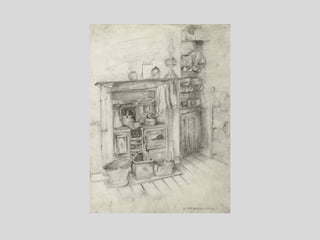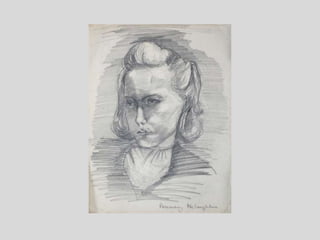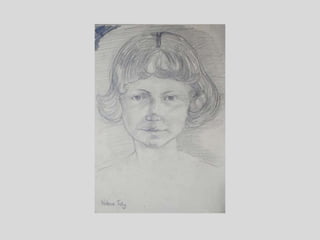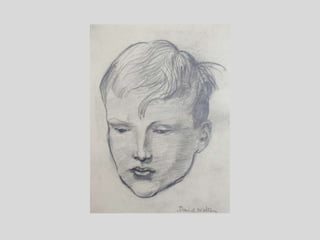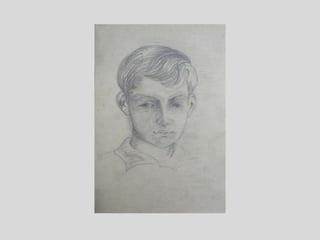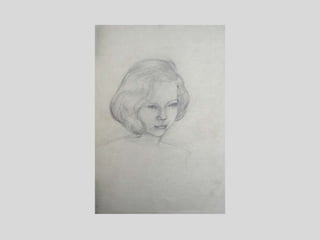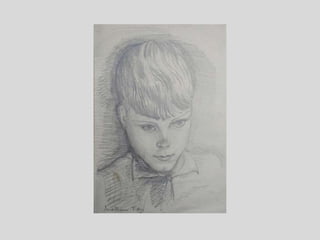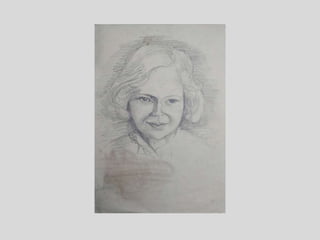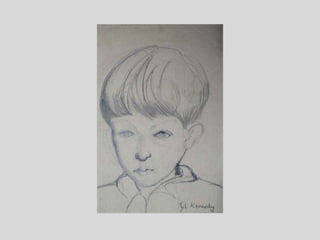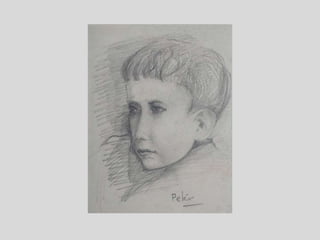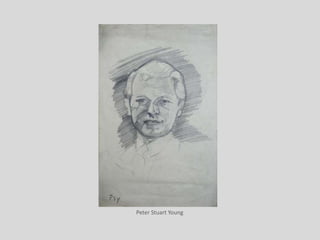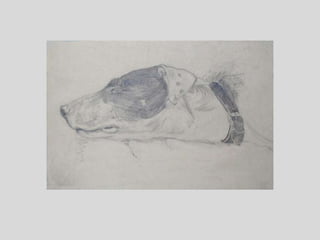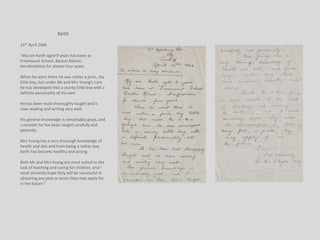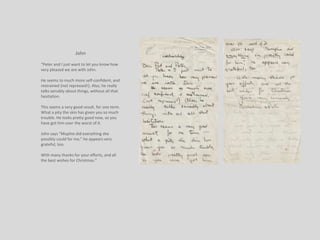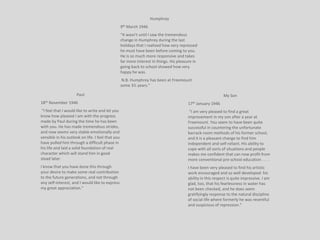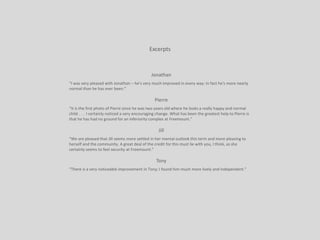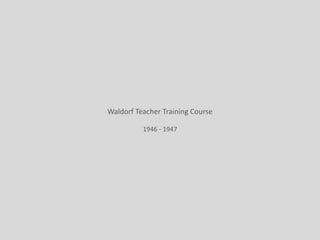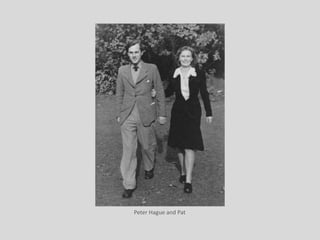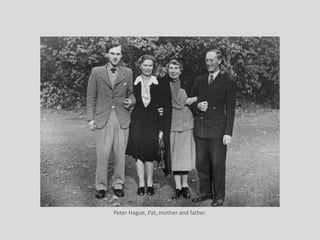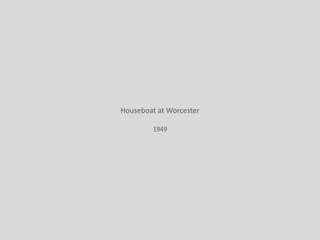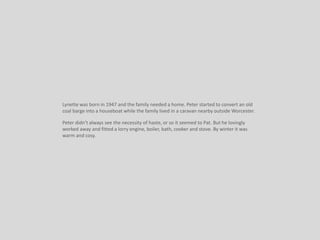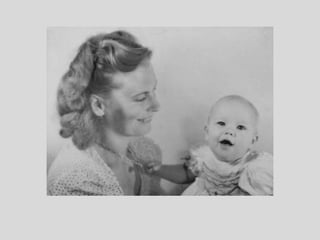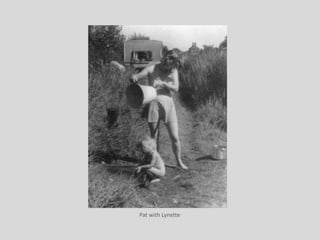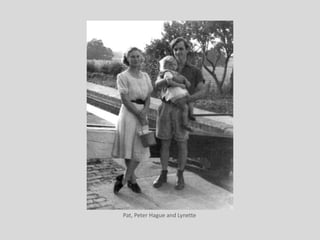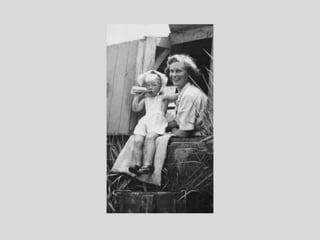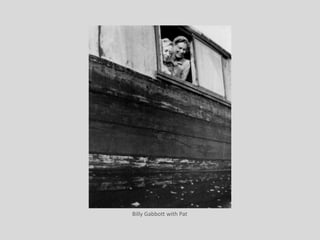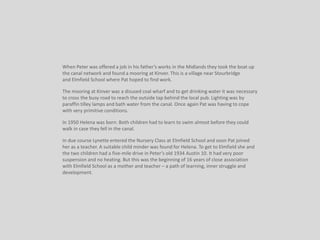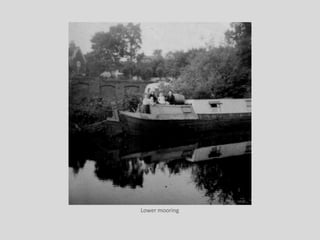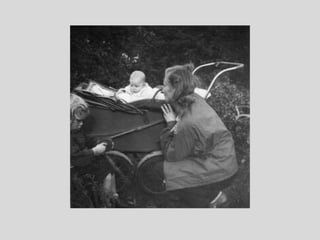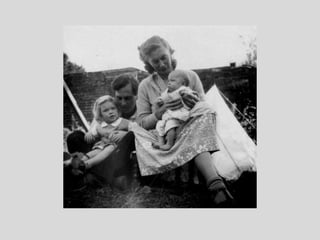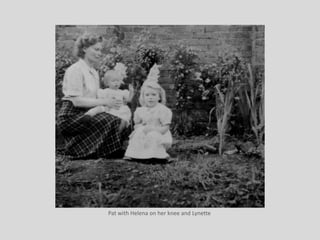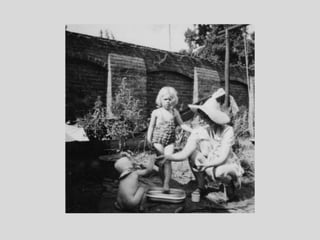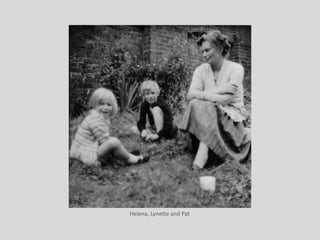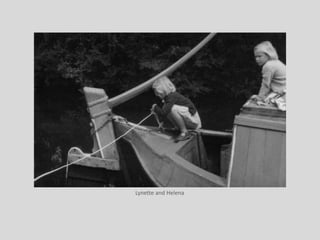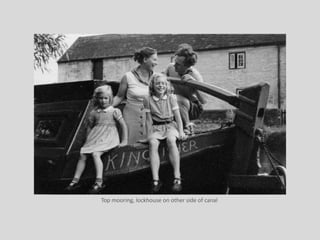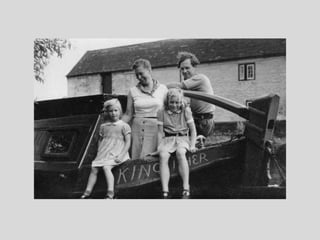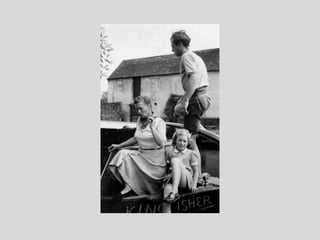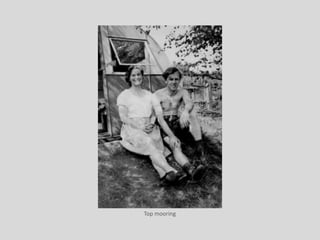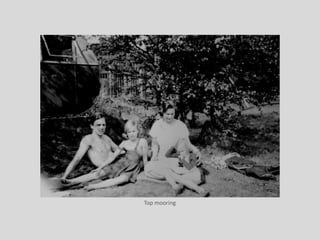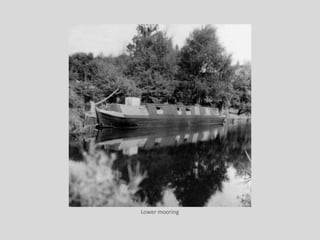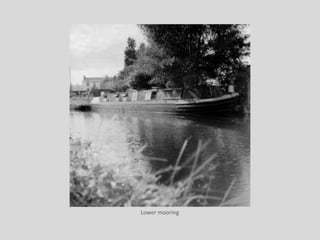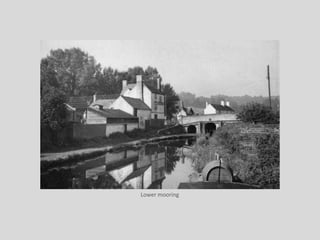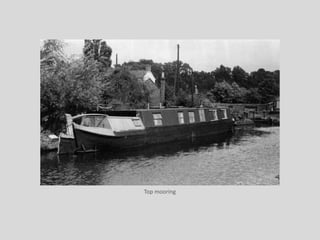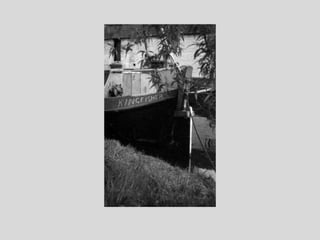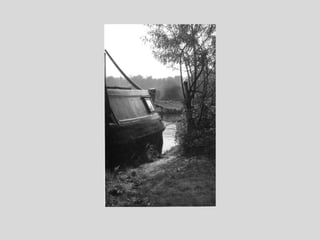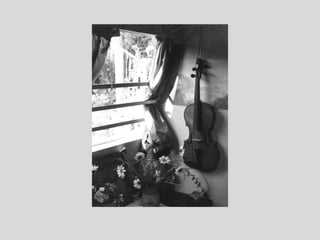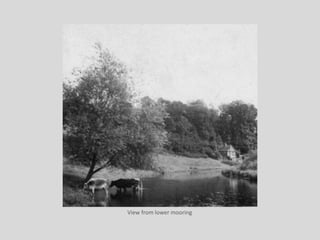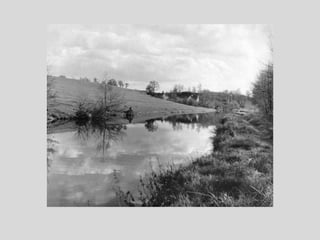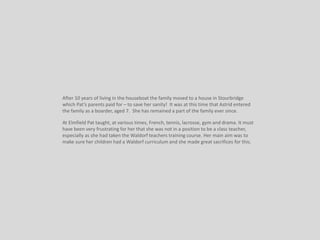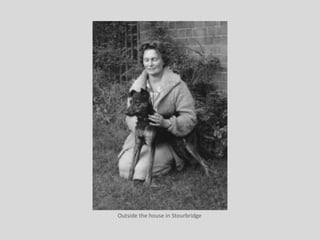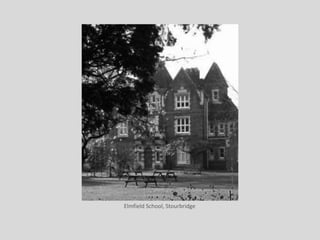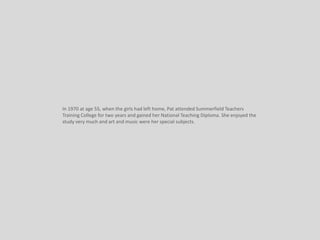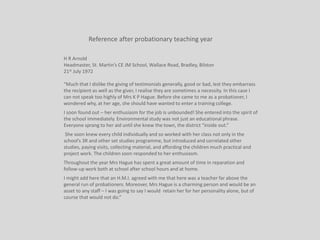Katharine Patience Hague - Part 2, Biographical photographs 1916 -1946
- 1. Katharine Patience Hague Biographical Photographs 1916 â 1946 Part 2
- 3. Back in England Pat studied chiropody for a year. After qualifying she found a job in a Lewisham foot clinic. The clients were mostly old, over-weight, working-class women who spent their working lives on their feet. There was an all-pervading smell of mentholated spirits and sweat from the clientsâ feet. They were busy from morning to evening. During her first winter working as a chiropodist she developed a hacking cough. The doctor said there was danger of her becoming consumptive.
- 6. South Africa 1938 - 1939
- 7. Patâs parents came up with a wonderful suggestion. Her sister Peggy was now living in Ceylon married to a tea planter and was expecting her first baby. They were going out there to support her while waiting for the birth. It was arranged that Pat would travel with them as far as Cape Town. Here she could stay with an aunt and uncle for a few months before continuing on to Ceylon to help look after the baby. They set out in 1938 when Pat was 23. From the tiny, dismal bedsit where the window looked out onto a brick wall â her accommodation while studying chiropody â she now experienced the height of luxury travelling first class on one of the enormous Union-Castle Line ships. She joined in the social life but nothing could remove the inner feeling of black despair and total lack of confidence. Patâs visits to South Africa and Ceylon allowed her to regain her strength and it was a return to a life of comfort and security. But this did not last long because the declaration of war meant she had to return to England.
- 11. Pat in black trousers pulling on rope
- 12. Pat talking to mother sitting in deck chair
- 14. At port on board ship with mother, uncle Dick, aunt Olive and cousins
- 15. Uncle Dickâs house â Lynwood, Heseldon Road, Rondebosch, Cape Town (now No.28)
- 16. With uncle Dick in South Africa
- 24. Uncle Dick
- 25. Aunt Olive
- 27. Rhodes memorial, Cape Town
- 40. Ceylon 1939
- 41. The Inchanga, built in 1934 in Belfast
- 42. Lorna Frater on board the Inchanga
- 43. Pat stopped off at the hotel before going on to Hindagala
- 46. Peggyâs bungalow in Hindagala
- 56. The tea factory
- 68. Oleander
- 69. Hollyside / Freemount School 1941 - 1946
- 70. Back home she did not know where to go or what to do and she was overwhelmed by a total lack of confidence. Then PSY entered her life yet again. He wanted to pick up their relationship once more. For a while they stayed with her in-laws in Haslemere in their beautiful house, planned and built to their own specification surrounded by a lovely garden with well-tended flower beds. But this was not for long. Because Peter was a conscientious objector he had to find an alternative to being called up. They visited many communities looking for like-minded people but it became clear to Peter that he wasnât cut out for communal living and that it wasnât easy to live with pacifists at close quarters. Then when they were staying at Stroud a change of direction opened up. On hearing that PSY was a teacher there was demand for them to set up a small boarding school where parents could send their children away from the war. And so Hollyside near Monmouth was found, two cottages joined together. The little school started with six pupils. Conditions were primitive in the extreme. A lean-to shed with one cold tap was the kitchen and the loo was a Elsan outside. Cooking meals required ingenuity but there were no complaints and no plates were left empty.
- 71. When more pupils came along the school moved to Freemount, a lovely manor house in the Golden Valley . Pat said that life at Freemount could fill a book. As a housemother, housekeeper and teacher Pat gained valuable experience in dealing with children and parents. The school naturally closed at the end of the war. It was also the end of Patâs marriage. But it was not the end of relationships which she had formed during those years. She enjoyed visits from a few former pupils right up to the end. While at Freemount two events happened which changed the direction of Patâs life. The first came about because they needed a homeopathic doctor for the children. They found a lady doctor in Bristol who became a friend. Then, out of the blue, she suggested that Pat might be interested in a workshop in Stroud. This became Patâs first introduction to Anthroposophy. Ellie Wilke introduced her to Eurythmy but, what was much more interesting to her at the time, Dr Stein gave lectures on Waldorf education. Pat bought as many books as she could carry on education by Rudolf Steiner, recognising that this was a turning point in her life. The second life-changing event came about because she decided to take a break and attend a conference on the Comparative Study of Religions in Tring, Hertfordshire. Here she met her future second husband, Peter Hague, who was attending a different course there. Afterwards he visited her at Freemount several times and finally they married.
- 72. Freemount Manor used as a boarding and day school during the war
- 74. Peter Young and Pat
- 75. Pat, Peter and Binnie
- 82. Pat at back on left, Peter standing on right
- 83. Pat at back on right with towel on head
- 84. Peter on right
- 86. Pat centre, Wendy Gabbott back right, Peter Gabbott front left
- 87. Peter sitting on spare wheel
- 93. Wendy on right
- 105. Pat 4th from right
- 106. Pat far right
- 111. Peter, Pat and Binnie
- 118. Mr & Mrs Herbert from the lodge (probably)
- 120. Pat with parents (possibly)
- 121. Mrs Peachy, a helper (probably)
- 122. Andrew Zobel, a helper (probably)
- 123. Peter Hague, second from left, Pat on right
- 124. Pat with her parents
- 125. Drive to lodge on right (probably)
- 131. Drawings by Pat
- 144. Peter Stuart Young
- 146. Letters from Parents
- 147. Keith 15th April 1946 âMy son Keith aged 9 years has been at Freemount School, Bacton Manor, Herefordshire for almost four years. When he went there he was rather a prim, shy little boy, but under Mr and Mrs Young's care he has developed into a sturdy little boy with a definite personality all his own. He has been most thoroughly taught and is now reading and writing very well. His general knowledge is remarkably good, and I consider he has been taught carefully and patiently. Mrs Young has a very thorough knowledge of health and diet and from being a rather boy Keith has become healthy and strong. Both Mr and Mrs Young are most suited to the task of teaching and caring for children, and I most sincerely hope they will be successful in obtaining any post or posts they may apply for in the future.â
- 148. John âPeter and I just want to let you know how very pleased we are with John. He seems to much more self-confident, and restrained (not repressed!). Also, he really talks sensibly about things, without all that hesitation. This seems a very good result, for one term. What a pity the skin has given you so much trouble. He looks pretty good now, so you have got him over the worst of it. John says âMuphie did everything she possibly could for me,â he appears very grateful, too. With many thanks for your efforts, and all the best wishes for Christmas.â
- 149. My Boy âI sent my boy aged 7 to Freemount School, Bacton mainly because he was very difficult to control at home and I had complete confidence in Mr and Mrs Young's kindness and tact. I thought that community life would help him most to have a better sense of proportion in social behaviour. Also he was rather delicate and liable to severe colds and bronchitis. He has greatly improved in every way, in fact he is now a real help to me and very diplomatic with the younger children and he is quite strong physically. I do not know of anyone better suited to help difficult children, who need extra love and sympathy to ordinary children.â
- 150. Paul 18th November 1946 âI feel that I would like to write and let you know how pleased I am with the progress made by Paul during the time he has been with you. He has made tremendous strides, and now seems very stable emotionally and sensible in his outlook on life. I feel that you have pulled him through a difficult phase in his life and laid a solid foundation of real character which will stand him in good stead later. I know that you have done this through your desire to make some real contribution to the future generations, and not through any self-interest, and I would like to express my great appreciation.â My Son 17th January 1946 âI am very pleased to find a great improvement in my son after a year at Freemount. You seem to have been quite successful in countering the unfortunate barrack-room methods of his former school, and it is a pleasant change to find him independent and self-reliant. His ability to cope with all sorts of situations and people makes me confident that can now profit from more conventional pre-school education . . . . I have been very pleased to find his artistic work encouraged and so well developed: his ability in this respect is quite impressive. I am glad, too, that his fearlessness in water has not been checked, and he does seem gratifyingly response to the natural discipline of social life where formerly he was resentful and suspicious of repression.â Humphrey 9th March 1946 âIt wasn't until I saw the tremendous change in Humphrey during the last holidays that I realised how very repressed he must have been before coming to you. He is so much more responsive and takes far more interest in things. His pleasure in going back to school showed how very happy he was. N.B. Humphrey has been at Freemount some 3Â― years.â
- 151. Jonathan âI was very pleased with Jonathan â he's very much improved in every way: in fact he's more nearly normal than he has ever been.â Pierre âIt is the first photo of Pierre since he was two years old where he looks a really happy and normal child . . . I certainly noticed a very encouraging change. What has been the greatest help to Pierre is that he has had no ground for an inferiority complex at Freemount.â Jill âWe are pleased that Jill seems more settled in her mental outlook this term and more pleasing to herself and the community. A great deal of the credit for this must lie with you, I think, as she certainly seems to feel security at Freemount.â Tony âThere is a very noticeable improvement in Tony; I found him much more lively and independent.â Excerpts
- 152. Waldorf Teacher Training Course 1946 - 1947
- 153. When Freemount closed in 1945 Pat found herself penniless but was determined to attend the teachers training course attached to Michael Hall. It was arranged that she should pay her way by working in the kitchen and helping Mrs Swatham with the boarders in the mansion. Now her heavy workload and responsibilities gave way to being a student and living in a community committed to working with the high ideals of Anthroposophy. She found the emphasis on artistic subjects wonderfully healing. She was lucky in her teachers who included Cecil Harwood, Francis Edmunds, William Mann and Elizabeth Jacobs. Each day was a revelation. The slow process of creating a new life began, including bonding with her new partner.
- 154. A painting Pat might have done on her teacher training course
- 155. Peter Hague and Pat
- 156. Peter Hague, Pat, mother and father
- 158. Lynette was born in 1947 and the family needed a home. Peter started to convert an old coal barge into a houseboat while the family lived in a caravan nearby outside Worcester. Peter didnât always see the necessity of haste, or so it seemed to Pat. But he lovingly worked away and fitted a lorry engine, boiler, bath, cooker and stove. By winter it was warm and cosy.
- 160. Caravan at Worcester lived in while boat being built
- 161. Pat with Lynette
- 162. Pat, Peter Hague and Lynette
- 164. Billy Gabbott with Pat
- 165. Houseboat at Kinver 1949 - 1958
- 166. When Peter was offered a job in his fatherâs works in the Midlands they took the boat up the canal network and found a mooring at Kinver. This is a village near Stourbridge and Elmfield School where Pat hoped to find work. The mooring at Kinver was a disused coal wharf and to get drinking water it was necessary to cross the busy road to reach the outside tap behind the local pub. Lighting was by paraffin tilley lamps and bath water from the canal. Once again Pat was having to cope with very primitive conditions. In 1950 Helena was born. Both children had to learn to swim almost before they could walk in case they fell in the canal. In due course Lynette entered the Nursery Class at Elmfield School and soon Pat joined her as a teacher. A suitable child minder was found for Helena. To get to Elmfield she and the two children had a five-mile drive in Peterâs old 1934 Austin 10. It had very poor suspension and no heating. But this was the beginning of 16 years of close association with Elmfield School as a mother and teacher â a path of learning, inner struggle and development.
- 167. Lower mooring
- 169. Peter, Helena, Lynette and Pat
- 171. Pat with Helena on her knee and Lynette
- 172. Helena and Pat (back), nieces Josephine and Annette with Lynette
- 174. Helena, Lynette and Pat
- 175. Lynette and Helena
- 176. Top mooring, lockhouse on other side of canal
- 179. Top mooring
- 180. Top mooring
- 181. Lower mooring
- 182. Lower mooring
- 183. Lower mooring
- 184. Top mooring
- 188. View from lower mooring
- 190. After 10 years of living in the houseboat the family moved to a house in Stourbridge which Patâs parents paid for â to save her sanity! It was at this time that Astrid entered the family as a boarder, aged 7. She has remained a part of the family ever since. At Elmfield Pat taught, at various times, French, tennis, lacrosse, gym and drama. It must have been very frustrating for her that she was not in a position to be a class teacher, especially as she had taken the Waldorf teachers training course. Her main aim was to make sure her children had a Waldorf curriculum and she made great sacrifices for this.
- 191. Outside the house in Stourbridge
- 192. House at Stourbridge
- 194. In 1970 at age 55, when the girls had left home, Pat attended Summerfield Teachers Training College for two years and gained her National Teaching Diploma. She enjoyed the study very much and art and music were her special subjects.
- 195. H R Arnold Headmaster, St. Martinâs CE JM School, Wallace Road, Bradley, Bilston 21st July 1972 âMuch that I dislike the giving of testimonials generally, good or bad, lest they embarrass the recipient as well as the giver, I realise they are sometimes a necessity. In this case I can not speak too highly of Mrs K P Hague. Before she came to me as a probationer, I wondered why, at her age, she should have wanted to enter a training college. I soon found out â her enthusiasm for the job is unbounded! She entered into the spirit of the school immediately. Environmental study was not just an educational phrase. Everyone sprang to her aid until she knew the town, the district âinside out.â She soon knew every child individually and so worked with her class not only in the schoolâs 3R and other set studies programme, but introduced and correlated other studies, paying visits, collecting material, and affording the children much practical and project work. The children soon responded to her enthusiasm. Throughout the year Mrs Hague has spent a great amount of time in reparation and follow-up work both at school after school hours and at home. I might add here that an H.M.I. agreed with me that here was a teacher far above the general run of probationers. Moreover, Mrs Hague is a charming person and would be an asset to any staff â I was going to say I would retain her for her personality alone, but of course that would not do.â Reference after probationary teaching year
